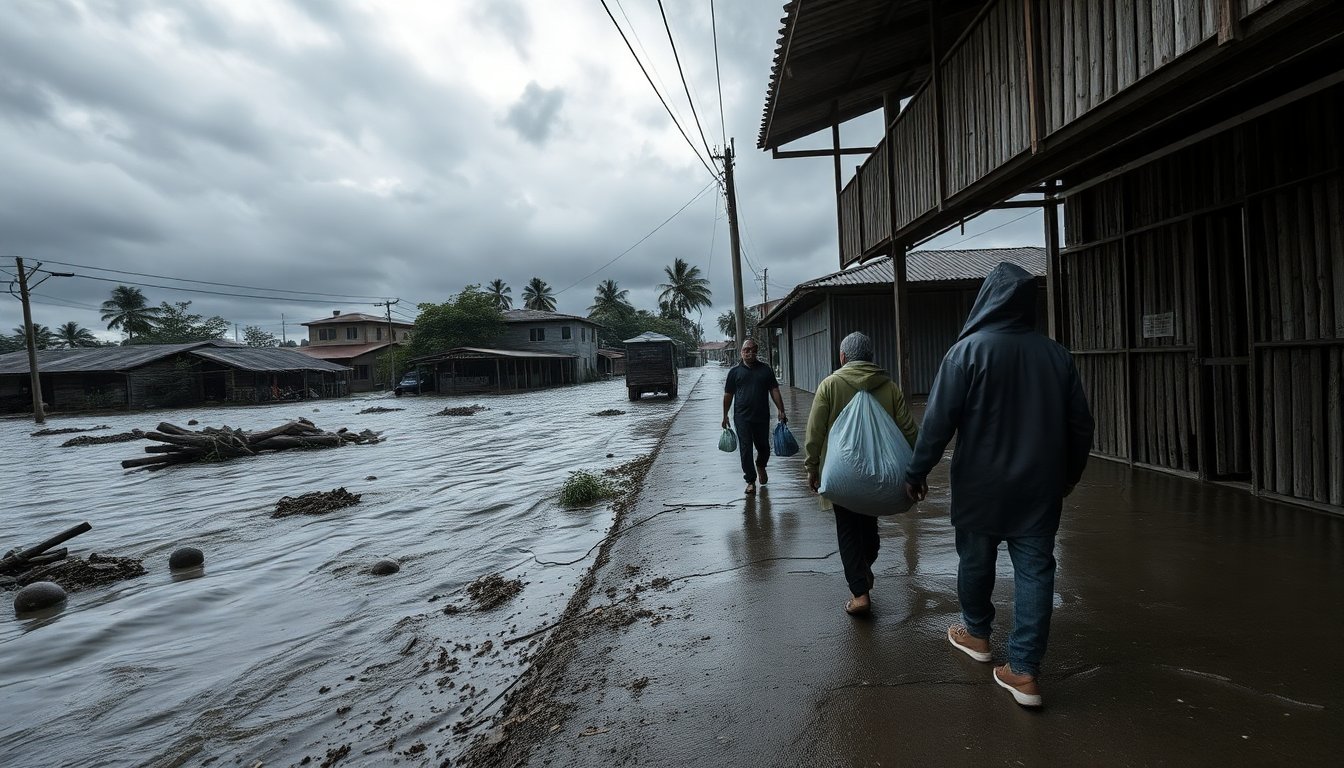Table of Contents
In the aftermath of relentless torrential rains, residents of Hidalgo face the devastating consequences of flooding that has claimed lives and ravaged communities. Miguel Angel Villegas Escobar, the regional director of primary education in Chahuaco, reported via WhatsApp voice messages that the floods have isolated the region, destroying critical infrastructure such as bridges and roads.
Between October 6 and October 9, heavy rainfall across five states, including Veracruz and Puebla, overwhelmed the landscape, causing rivers to overflow and triggering widespread mudslides. The impact has been catastrophic, with Villegas Escobar confirming at least 15 deaths in Tianguistengo, a municipality that includes several villages, including his own.
Community response amid crisis
As the floods devastated the area, the Chahuaco community mobilized to assist neighbors in Tlacolula, one of the hardest-hit villages. Villegas Escobar recounted how local residents have resorted to ancient trails, transporting supplies on horses and pack animals to reach those in need. “We have gone there to help,” he stated, emphasizing the spirit of solidarity among affected communities.
Casualty and damage reports
The toll of the storm has been staggering. Official reports indicate that 64 individuals have lost their lives, with another 65 still unaccounted for. The overwhelming force of nature has destroyed over 100 communities, with Veracruz, Hidalgo, and Puebla suffering the most. Devastating images of streets transformed into muddy rivers and homes engulfed by floodwaters have circulated widely on social media.
According to Laura Velázquez, the national coordinator of the federal civil protection agency, both federal and state officials are engaged in relief efforts. “The federal government, the state, and municipal governments have been present helping the affected populations,” she affirmed during a press briefing.
Government’s response and criticism
Despite concerted efforts, criticism has mounted against President Claudia Sheinbaum’s administration and local governors for what many perceive as a sluggish response. Reports indicate that opposition politicians and citizens have expressed frustrations regarding the lack of timely alerts and preventive measures prior to the disaster.
Public demonstrations for assistance
In light of the dire circumstances, residents of Texcatepec organized a peaceful protest outside the National Palace in Mexico City, urging the president to take action and extend support to those affected in Veracruz. During a press conference, Sheinbaum acknowledged the residents’ grievances, noting that preliminary assessments revealed damage or destruction to over 100,000 homes.
Sheinbaum highlighted ongoing efforts to establish an airbridge, utilizing helicopters to deliver aid to isolated communities in Veracruz, Hidalgo, and Puebla. “First we are opening federal highways … then we entered into state [highways],” she explained, underscoring the urgency of restoring access to these locations.
Unexpected severity of the rains
The unprecedented intensity of the rainfall took many authorities by surprise. Raymundo Pedro Morales Ángeles, the secretary of the navy, noted that while officials were monitoring potential weather threats, a sudden low-pressure system formed in the Gulf of Mexico, colliding with a cold front from Texas, resulting in the catastrophic downpour.
As the rainy season nears its end and rivers reach capacity, this combination of factors created a perfect storm for disastrous flooding. Sheinbaum remarked, “There was no scientific condition, meteorologically, that could have told us that the rains would be of this magnitude.”
Between October 6 and October 9, heavy rainfall across five states, including Veracruz and Puebla, overwhelmed the landscape, causing rivers to overflow and triggering widespread mudslides. The impact has been catastrophic, with Villegas Escobar confirming at least 15 deaths in Tianguistengo, a municipality that includes several villages, including his own.0


